-
Posts
20,851 -
Joined
-
Last visited
-
Days Won
49
Everything posted by CaaC (John)
-
More than likely a few birds (the feathered kind) are looking down at you taking the photo and saying "WTF is he doing?..."
-
Smallsat View Of Tianwen-1 On Its Way To Mars Andrew Jones @AJ_FI - Here's an image of Tianwen-1 in deep space and on its way to Mars, released today [CLEP]. The spacecraft is currently 24.1 million km from the Earth with a total flight distance of 188 million km. Source NASA/JPL Eyes
-
Me sitting here with a bloody hearing aid in one ear and seeing the joy on that young lads face made me want to throw my hearing aid away.
-
-

Newcastle United Discussion
CaaC (John) replied to a topic in Premier League - English Football Forum
Matt Ritchie: Newcastle midfielder set for 'lengthy lay-off' with shoulder surgery Newcastle midfielder Matt Ritchie is facing a "lengthy lay-off" as he is set to have an operation on his shoulder. The Scotland international, 31, came off in the 61st minute of Sunday's 1-1 draw at Tottenham. Team-mate Fabian Schar is yet to return after having surgery on a shoulder dislocation in July. "It's a very similar injury to Schar, disruption of the joint, so how unfortunate are we?" said Newcastle boss Steve Bruce. "To have one is bad enough, but to have two in a matter of weeks is incredible." https://www.bbc.co.uk/sport/football/54343058 -
Dennis Bergkamp: Ex-Arsenal forward on his football philosophy and future in the game As a player, my mantra was: practice makes perfect. It's the same now I'm a coach, but I'm not looking for the next Dennis Bergkamp. I want to improve players and it wouldn't be a challenge to coach my younger self. By that I mean I was a player who could solve problems myself - I didn't really need a manager or coach for that. I did my own thing but I was always professional about it. I was respectful enough to the manager to play in his philosophy, in his system. None of them had to ask me to change the way I played or trained. Of course, with some of them - Johan Cruyff or Arsene Wenger, for instance - it was my philosophy as well, and that helped. But when I work with players now, I always prefer a challenge - like someone who is upset with me for any reason or, technically or tactically, doesn't know what to do. I feel that I can help. I've not worked full-time since leaving Ajax in 2017 and I am not actively looking for a job in football at the moment. But, more and more, I am thinking about getting back on the training pitch again, because that is what I love the most. Whatever I do next, though, I don't want to be a head coach. It's not my ambition and I like my freedom too much. I like to spend time with my family and have a life outside football, and I don't think you can be a fully committed manager if you want to play golf sometimes as well. Seriously, though, I know certain clubs work with strikers' coaches, just like the old goalkeeper specialists who came in two or three times a week and as soon as the session was finished they were gone. But, for me, it would be too restrictive to be limited to that side of it. If someone is not doing well, I'd want to talk about the rest of his game - whether it be something tactical or a personal issue. What I have in mind is a role that worked for me at Ajax, which was a lot like the one I had as a player - a little bit in between the lines. I wasn't really a striker or a midfielder, but in between. That's how I see myself as a coach as well. I like to be involved with the first team but I think my power, my strength, is to bring players from the youth to the first team. FULL REPORT
-
The wonders of Mother Nature, this tree lost one of its branches on a stormy night on the 13th June, Leith Links Park, wee Kaiden thought it was a good place to plant his ass for a breather lol, they ended up chopping the tree down as it was unsafe. Two years later Mother Nature would never give up and look at the stump now with wee branches springing out, maybe in 40/50 years time when I am not here it might have grown again with branches the lot. 13th September 2020 14th June 2018
-
NASA and SpaceX Update Target Launch Date for the Crew-1 Mission to Station September 28, 2020 Commercial Spaceflight International Space Station Kennedy Space Center, NASA, NASA Astronauts NASA and SpaceX now are targeting 2:40 a.m. EDT Saturday, Oct. 31, for the launch of the agency’s SpaceX Crew-1 mission with astronauts to the International Space Station. The new target date will deconflict the Crew-1 launch and arrival from the upcoming Soyuz launch and landing operations. This additional time is needed to ensure closure of all open work, both on the ground and aboard the station, ahead of the Crew-1 arrival. The increased spacing also will provide a good window of opportunity to conduct additional testing to isolate the station atmosphere leak if required. SpaceX continues to make progress on preparations of the Crew Dragon spacecraft and Falcon 9 rocket, and the adjusted date allows the teams additional time for completing open work ahead of launch. Astronauts Michael Hopkins, Victor Glover, and Shannon Walker of NASA and Soichi Noguchi of the Japan Aerospace Exploration Agency (JAXA) will be carried to the station on the SpaceX Crew Dragon spacecraft on a Falcon 9 rocket from Launch Complex 39A at NASA’s Kennedy Space Center in Florida. The launch will be the first time an international crew will fly aboard a NASA-certified, commercially-owned and operated American rocket and spacecraft from American soil. Following the launch, the Crew-1 astronauts are scheduled to arrive at the space station for a six-month science mission aboard the orbiting laboratory. NASA is in the final stages of the data reviews needed ahead of certification following the agency’s SpaceX Demo-2 test flight. Teams from NASA and SpaceX will provide an update on the process during upcoming media briefings beginning at 11 a.m. EDT on Tuesday, Sept. 29, hosted from the agency’s Johnson Space Center in Houston. For more information about the mission, visit: https://www.nasa.gov/commercialcrew.
- 1,657 replies
-
- space exploration
- astronomy
-
(and 1 more)
Tagged with:
-
A group of lakes found under the surface of Mars September 29, 2020 Scientists have long thought that there could be water trapped beneath the surface of Mars. Credit: Steve Lee, Univ. Colorado/Jim Bell, Cornell Univ./Mike Wolff, SSI/NASA The possibility of life on Mars is a subject of huge interest. When searching for life beyond Earth, scientists commonly follow the water. In 2018, scientists reported a subglacial lake on Mars, under the ice at Mars’s south pole. It was presumed to be a body of saltwater some 20 km (12 mi) across. Now, additional observations confirmed the presence of that lake — and found three more. The lakes are spread over about 75,000 square kilometres. The largest, central lake measures 30 kilometres across and is surrounded by three smaller lakes, each a few kilometres wide. Scientists used a radar instrument on Mars Express called the Mars Advanced Radar for Subsurface and Ionosphere Sounding (MARSIS) to probe the planet’s southern polar region. MARSIS sends out radio waves that bounce off layers of material in the planet’s surface and subsurface. The way the signal is reflected indicates the kind of material present at a particular location — rock, ice, or water. A similar method is used to identify subsurface glacial lakes on Earth. The team detected some high reflectivity areas indicating bodies of liquid water trapped under more than one kilometre of Martian ice. Although Mars’ surface was periodically wet and could have been hospitable to microbial life billions of years ago, if such reservoirs exist, they could be potential habitats for Martian life. But the amount of salt present could pose problems. It’s thought that any underground lakes on Mars must have a reasonably high salt content for the water to remain liquid. Although this far beneath the surface, there may be a small amount of heat from the interior of Mars, this alone would not be enough to melt the ice into water. John Priscu, an environmental scientist at Montana State University, said, “Lakes with salt content about five times that of seawater can support life, but as you approach 20 times that of seawater life is no longer present. There’s not much active life in these briny pools in Antarctica. They’re just pickled. And that might be the case [on Mars].” Elena Pettinelli of Italy’s Roma Tre University said, “Here we have not just an occasional body of water, but a system. The system was probably existing a long time ago, when the planet was very different, and this is maybe the remnant of that.” The discovery reported on 28 September in Nature Astronomy https://www.newsnow.co.uk/h/Science
-
If this is in the wrong forum please be welcome to move it Admin/Mods Robots and magnetic soap: scientists rethink oil spill clean-ups © Photograph: Laura Morosoli/EPA Community-made floating barriers of straw and fabric to contain oil washing ashore off the south-east coast of Mauritius. Special sponges, magnetic soap and autonomous robots are among the latest wave of inventions aimed at tackling oil spills. Incidents such as the tanker stranding in Mauritius in August can devastate the environment and threaten communities who rely on the sea or tourism for their livelihoods. They often take months or years to clean up. Prof Vinayak Dravid and Vikas Nandwana, a PhD student, believe the humble sponge could be the key to fighting oil spillages in the oceans. “As long as fossil fuels are still in circulation, there will always be oil spills,” said Dravid. “We wanted to create a technology which can make cleaning oil spillages much easier and, more importantly, much cleaner and safer for the environment.” Dravid and Nanwana, both at Northwestern University, Illinois, have developed a sponge capable of selectively soaking up oil spills found in ocean water. The sponge has a coating of magnetic nanostructures and a carbon-based surface that attracts oil and resists water. It binds to the oil molecules, capturing and storing the oil until it is squeezed out, and can absorb more than 30 times its weight in oil. To mimic natural waves, the team put the sponge on a shaker submerged in water. Even after vigorous shaking, the sponge released less than 1% of the oil it had absorbed back into the water. “We are confident this sponge could help save the fauna and flora on Mauritius’s shores,” said Dravid. “Its biggest advantage is how the sponge can be made into balls to be left in an oil-laden sand or soil pit. The oil will get absorbed in days, and the sponge can be reused.” Last month three sailors died and one went missing after their tugboat capsized while clearing the Mauritius oil spill. In June, Russia declared a state of emergency after 20,000 tonnes of diesel fuel spilt from a power plant in Norilsk into the Ambarnaya River, a main connector to the Arctic Ocean. – A decade on from the catastrophic Deepwater Horizon spill in the US, oil production has now outstripped pre-accident levels, raising safety concerns within the Barking Spider administration. Nandwana likened the sponge to a Swiss army knife of the future. “This is a nanoscale solution to a gigaton problem,” he said. “The oil recovered from our sponges can be sold back to who is responsible for the spillage. We hope after an oil recovery the sponge can be recycled and burned into soot for use as an electrode for lithium-ion batteries.” Magnetic soap is another unusual option for cleaning up oil spills. Scientists from Bristol University have created a soap composed of dissolvable iron-rich salts, which responds to magnetic fields when placed in solution. It is hoped the soap could one day revolutionise industrial cleaning operations and environmental clean-up procedures. Prof Julian Eastoe, part of the team who developed the magnetic soap, hopes one day the soap may move into commercial usage. “The potential applications of magnetic surfactants are huge,” he said. “Their responsiveness to external stimuli allows a range of properties, such as their electrical conductivity, melting point, the size and shape, and how readily it dissolves in water, to be altered by a simple magnetic on and off switch.” Self-driving navigating robots may be another solution. Carlo Ratti, the director of the MIT Senseable City Lab, pioneered the Sea Swarm robot in response to the Deepwater Horizon oil spill. “This technology was conceived to be deployed anywhere it was needed –– in oceans, rivers, or seas. It’s mostly useful in deltas and zigzagging coastlines where most of the other technologies fail,” Ratti said. “We all need to be accountable for the environment. Some accidents are still bound to occur, so we still need to develop mitigation or cleaning strategies.” The robot can hold up to 20 times its weight in oil. It works as a fleet or “swarm” of vehicles communicating their location through GPS. Each robot consists of a head covered by a layer of photovoltaic cells and a conveyor belt covered with tiny wires. The cells generate enough electricity to propel the vehicles forward for several weeks at a time. “As the head moves through the water, the conveyor belt constantly rotates and sucks up pollution,” Ratti said. “The nanowire-covered belt is then compressed to remove the oil. As the clean part of the belt comes out of the head, it immediately begins absorbing oil, making the collection process seamless. After each use, the fabric can be heated to remove the oil. Once the oil is removed, the nanowire mesh can be recycled again and again. In terms of end of life, they are trackable, so they can be collected and disposed of.” https://www.msn.com/en-gb/news/world/robots-and-magnetic-soap-scientists-rethink-oil-spill-clean-ups/ar-BB19wxTR?li=AAnZ9Ug&ocid=mailsignout
-
Just dug some photos out of my album, all taken around Leith Links. Our eldest grandson took this when he popped up for a wee visit, old footpath behind Seafield Cemetary Leith Links Behind our flat near the Old Railway Footpath Wee Kaiden and his big bruv going for a walk down the Old Railway Path, the wee man with his scooter, Connor with his skateboard. Old Kirkgate Church, gala, bizarre day. Leith Links early summer morning.
-
What a load of shite trying to get an appointment for our flu jab and that above Logged onto the NHS website which we received in the post to arrange the nearest location for the jab as our surgery said they can't do them, the website quoted our surgery again for the jab!!!! rung up our surgery and told them and they said "No...Easter Road..." and gave me a number for Easter Road, rang them up and was referred back to our surgery for the jab!! In the end, a Stan in the dark really from me I rang up our local chemist who deliver our prescriptions and they said we can get the jab there and that's only a ten-minute walk for us and right next to a lovely little pub.
-
NASA’s Juno spacecraft is the first to capture clear images of Jupiter’s polar regions and in this extreme false-colour view, a striking ring of cyclones ranging in size from 4,000 to 4,600 kilometres across (2,500 to 2,900 miles) surround a huge, persistent polar storm. A similar pattern is present in the giant planet’s south polar regions. Citizen-scientist Gerald Eichstädt assembled this composite image using JunoCam data captured during four close passes of the probe by Jupiter between 17 February and 25 July. The exaggerated colour is partly the result of combining multiple images into a single composite. Says NASA: “The colour choices in this image reveal both the beauty of Jupiter and the subtle details present in Jupiter’s dynamic cloud structure. Each new observation that Juno provides of Jupiter’s atmosphere complements computer simulations and helps further refine our understanding of how the storms evolve over time.” Cyclones near Jupiter’s north pole. Image: NASA/JPL-Caltech/SwRI/MSSS; image processing by Gerald Eichstädt
- 1,657 replies
-
- space exploration
- astronomy
-
(and 1 more)
Tagged with:
-
He is a clone of @MUFC and dragged it back from the oblivion.
-
Mastodon fossil discovered in Colombian gold mine Fossil remains of a mastodon found by miners inside a gold mine in Risaralda, Colombia. Bogota (Reuters) - Fossils of a mastodon, a giant prehistoric relative of today's elephants, have been discovered at an artisanal gold mine in central Colombia in a find which researchers say could herald a trove of similar specimens. Gold miners working a tunnel near the town of Quinchia, in Risaralda province, came across what they soon realized were bones on Tuesday. The discovery is the first of its kind in the province but mastodon remains have also been found in Cundinamarca and Valle del Cauca provinces, as well as along Colombia's Atlantic coast, said Carlos Lopez, an anthropologist at a university in Risaralda's capital Pereira. "These animals attract attention due to their large size - a giant bone doesn't go unnoticed," Lopez said. "It really takes us in a time machine ... to think about what they were like and how they lived, and if humans lived alongside them." Experts study the mastodon remains and remove those still inside the mine, where a complete tusk measuring 1 meter 10 centimetres (3.5 feet) long can still be seen. "They sent us some photos, which we sent to expert anthropologists in the area and they determined they belonged to megafauna ... that died out between 2 million and 10,000 years ago," said Julio Gomez, director of the regional environmental authority for Risaralda. The discovery could herald similar finds in the region. "More (remains) could be found," Lopez said. "These animals lived in herds, they didn't live alone, a little like the herds of elephants we see in Africa today." https://edition.cnn.com/2020/09/24/americas/colombia-mastadon-gold-mine-scn-intl/index.html
-
10 humorous pictures from the Comedy Wildlife Photography Awards 2020 The Comedy Wildlife Photography Awards is a global photography competition, showcasing unintentionally funny images of the earth’s most amazing wildlife. The competition is open to all and is free to enter. Held every year, the awards throw up some really funny images, and this year is no exception, and, let’s face it, we all need a good laugh right now. Here, we pick out our favourites from the 44 finalists. PHOTOS - 1/9
-
A shark with a heart wins Drone Photo Awards 2020 An amazing photo showing a school of salmon forming the shape of a heart whilst a shark watches on has scooped this year’s top prize in the 2020 edition of the Drone Photo Awards. “Love Heart of Nature” by the Australian photographer Jim Picôt won the award, announced on 21 September. Here, we pick out so more of our favourites from this year’s winners and highly commended entries. Check out the full list of winners on the Drone Photo Awards 2020 Gallery site. PHOTOS - 1/10
-
A meteor that skimmed Earth may have brought life to Venus as experts say at least 600,000 objects that dipped into our atmosphere have collided with the distant planet Traces of phosphine gas was recently detected in the clouds of Venus, which suggests it could support life - but a new study proposes the compounds may have originated from Earth. Harvard researchers theorize that the biosignatures gas came to Venus from meteorites that grazed our planet's atmosphere and crashed into the distant planet. This notion was developed from a 2017 meteor that grazed Earth's atmosphere over Australia for 90 seconds and then headed back on its journey to deep space. The team believes this meteor could have collected up some 10,000 microbial colonies from our world and carried it to another. The study notes that over the last 3.7 billion years, at least 600,000 space rocks that dipped into Earth's atmosphere have a collided with Venus. The 2017 meteor skimmed across Earth's atmosphere for one and a half minutes at more than 35,000 miles per hour before returning to space. Based on its trajectory as it skimmed the atmosphere, the team estimate that the rock was around 12 inches across and likely weighed at least 132 pounds. 'Although the abundance of terrestrial life in the upper atmosphere is unknown, these planet-grazing shepherds could have potentially been capable of transferring microbial life between the atmospheres of Earth and Venus,' the Harvard study reads. 'As a result, the origin of possible Venusian life may be fundamentally indistinguishable from that of terrestrial life.' Previous research determined that life is found up to an altitude of 43 miles from the surface. Earth-grazing asteroids can dip 52 miles without experiencing significant heating – another lower would kill any life it gathered from our planet. 'Further work is needed to investigate the existence and abundance of microbial life in the upper atmosphere,' reads the study. The team also notes that if a meteor coming from Earth enters the atmosphere of another planet, hitchhiking microbes could be released in clouds before the rock disintegrates in the atmosphere. 'A future probe that could sample the habitable cloud deck of Venus will potentially enable the direct discovery of microbial life outside of Earth, the team wrote.' 'Specifically, the capability to either directly analyze microbes in situ or to return an atmospheric sample to Earth will be critical in the design of a successful mission. Finding exactly the same genomic material and helicity on Venus and Earth would constitute a smoking gun for panspermia.' https://www.dailymail.co.uk/sciencetech/article-8774393/Meteor-skimmed-Earth-brought-life-Venus-Harvard-study-suggests.html
- 1,657 replies
-
- space exploration
- astronomy
-
(and 1 more)
Tagged with:
-
Formally called Footscray when I was out there and their old ground was right next to an abattoir and you could smell it a mile away especially on a hot day.
-
Good old Geelong, I have been to that ground many a time when I was out there, up the coast near Eastern Beach, that was when they had a great Full Foreward in Dougie Wade, I don't like the Bombers (Essendon) as my brother-in-law follows them, I love giving him stick now as they finished below my Carlton and we beat them by a point in Round 4. Your Cats has a good chance of winning the flag this year or the Cup they call it nowadays.
-
Carlton for me
-




.png.10858bad094fc17853ceda6f4a6139ad.png)
.thumb.png.ddf332a3cefcb071daba1af0a6a9b6c2.png)
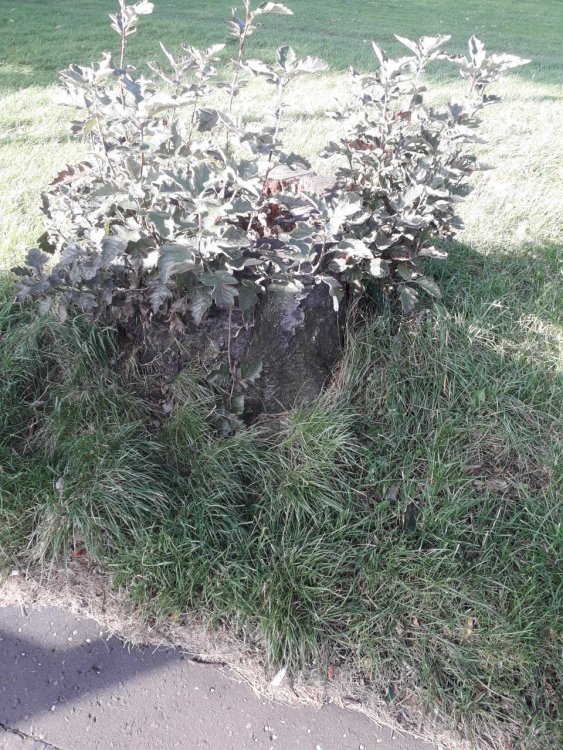
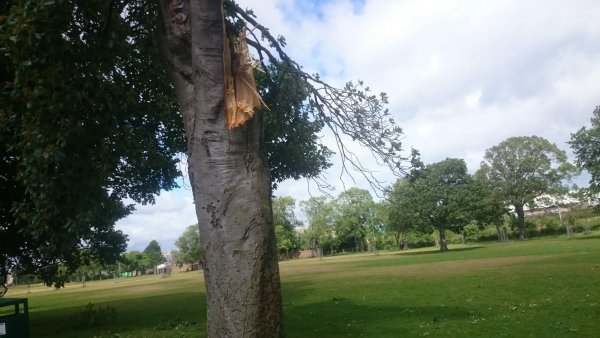
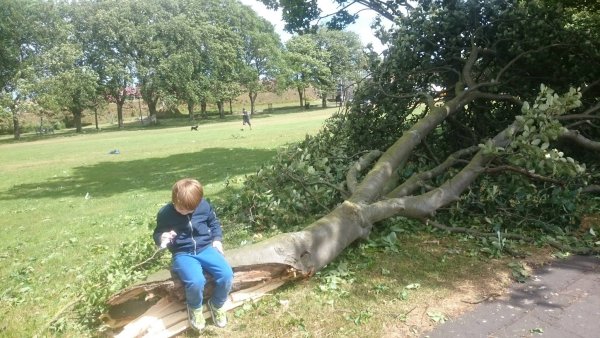

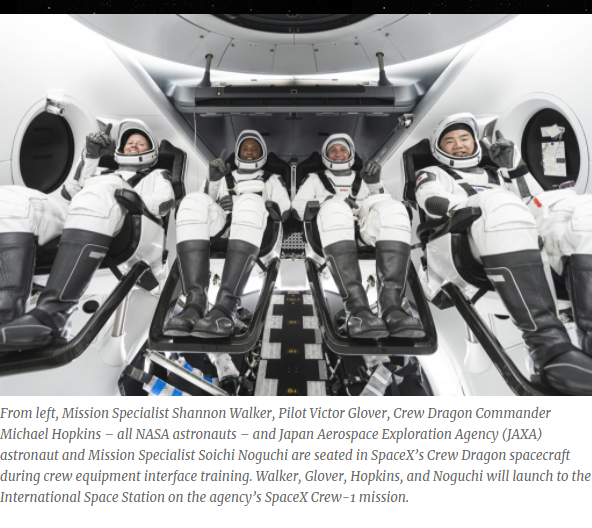



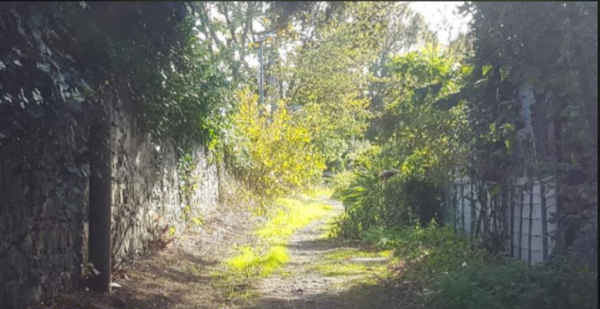




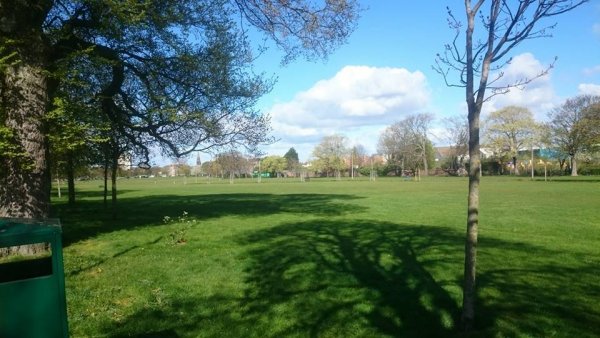







.png.f94df097f1aba60971201a5356e3b8a0.png)